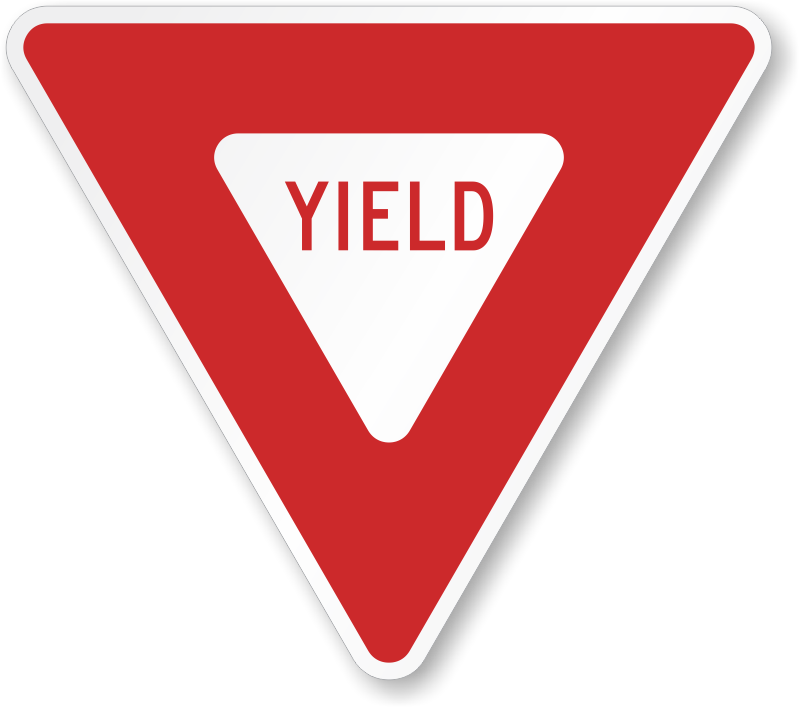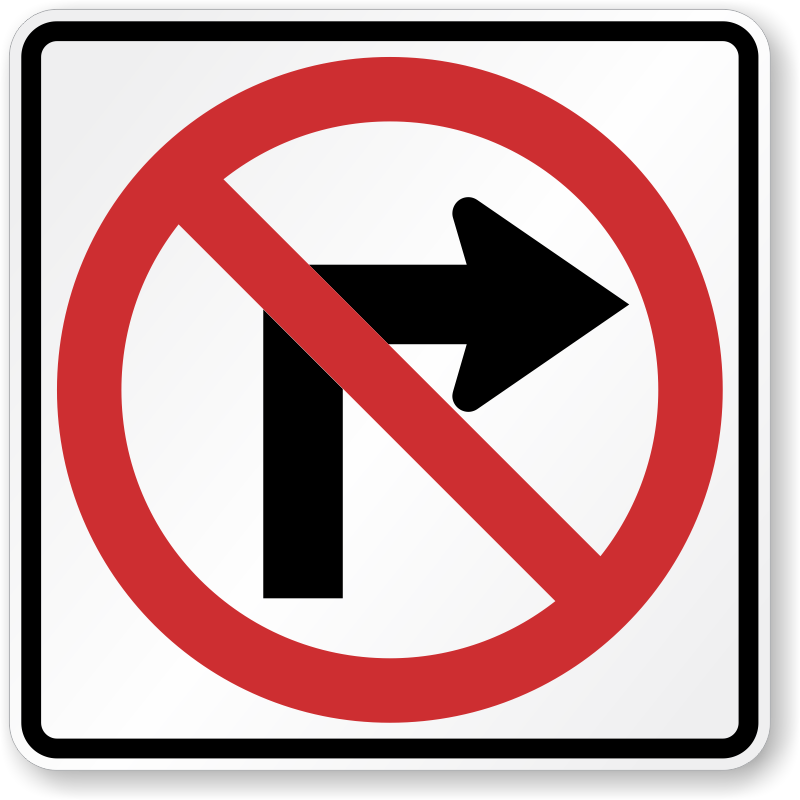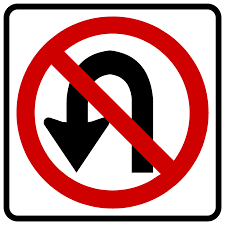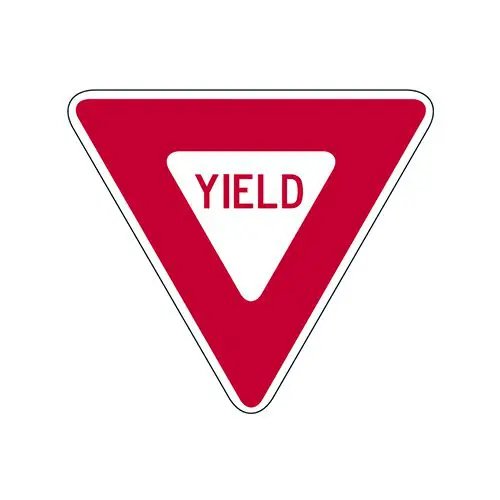California DMV Permit Practice Test (WIP)
1/212
There's no tags or description
Looks like no tags are added yet.
Name | Mastery | Learn | Test | Matching | Spaced |
|---|
No study sessions yet.
213 Terms
Question 1: You may drive off of the paved roadway to pass another vehicle:
Under no circumstances
Question 2: You are approaching a railroad crossing with no warning devices and are unable to see 400 feet down the tracks in one direction. The speed limit is:
15 MPH
Question 3: When parking your vehicle parallel to the curb on a level street:
Your wheels must be within 18 inches of the curb.
Question 4: When you are merging onto the freeway, you should be driving:
At or near the speed as the traffic on the freeway.
Question 5: When driving in fog, you should use your:
Low beams
Question 6: A white-painted curb means:
Loading zone for passengers or mail only.
Question 7: A school bus ahead of you in your lane is stopped with red lights flashing. You should:
Stop as long as the red lights are flashing.
Question 8: California’s “Basic Speed Law” says:
You should never drive faster than is safe for current conditions.
Question 9: You just sold your vehicle. You must notify the DMV, within how many days?:
5 days
Question 10: To avoid last minute moves, you should be looking down the road to where your vehicle will be in about ___:
10 to 15 seconds
Question 11: You are about to make a left turn. You must signal continuously for how many feet before making the turn?:
100 feet.
Question 12: Which of the following statements about blind spots is true?:
Large trucks have bigger blind spots than most passenger vehicles.
Question 13: You have been involved in a minor traffic collision with a parked vehicle and you can’t find the owner. You must:
Leave a note on the vehicle and report the accident without delay to the city police or, in unincorporated areas, to the CHP(California Highway Patrol).
Question 14: Unless otherwise posted the speed limit in a residential area is ___:
25 MPH.
Question 15: You may legally block an intersection:
Under no circumstances
Question 16: When parking uphill on a two-way street with no curb, your front wheels should be:
Turned to the right (away from the street).
Question 17: With a Class C drivers license a person may drive:
A 3-axle vehicle if the Gross Vehicle Weight is less than 6,000 pounds.
Question 18: To turn left from a multi-lane one-way street onto a one-way street, you should start your turn from:
The lane closest to the left curb.
Question 19: If you are involved in a traffic collision, you are required to complete and submit a written report (SR1) to the DMV:
If there is property damage in excess of $1,000 or if there are any injuries.
Question 20: Roadways are the most slippery:
The first rain after a dry spell. (the greasy layer rises to the top, forming a slick surface for drivers)

Question 21: You may not park your vehicle:
Next to a red painted curb.
Question 22: You must notify the DMV within 5 days if you:
Sell or transfer your vehicle.
Question 23: Two sets of solid, double, yellow lines that are two or more feet apart:
May not be crossed for any reason.
Question 24: You want to make a right turn at an upcoming intersection. You should slow down and:
Signal for 100 feet before turning.
Question 25: You are driving on a freeway posted for 65 MPH. The traffic is travelling at 70 MPH. You may legally drive:
No faster than 65 MPH.
Question 26: It is illegal to park your vehicle:
In an unmarked crosswalk.
Question 27: The safest precaution that you can take regarding the use of cellular phones and driving is:
Use hands-free devices so you can keep both hands on the steering wheel.
Question 28: If you have a green light, but traffic is blocking the intersection, you should:
Stay out of the intersection until traffic clears.
Question 29: You are getting ready to make a right turn. You should:
Signal during the last 100 feet before you turn. Slow down or stop, if necessary, and then make the turn.
Question 30: You must obey instructions from school crossing guards:
At all times.
Question 31: It is a very windy day. You are driving and a dust storm blows across the freeway reducing your visibility. You should drive slower and turn on your:
Headlights.
Question 32: If you plan to pass another vehicle, you should:
Do not assume the other driver will make space for you to return to your lane.
Question 33: If you are in the middle of an intersection when you hear the siren of an emergency vehicle, you should:
Continue through the intersection then move to the right and stop.
Question 34: If you drive faster than other vehicles on a road with one lane in each direction and continually pass the other cars, you will:
Increase your chances of an accident.
Question 35: Which of these vehicles must always stop before crossing railroad tracks?
Tank trucks with hazardous materials placards.
Question 36: You are driving on a one-way street. You may turn left onto another one-way street only if:
Traffic on the street moves to the left.
Question 37: A large truck is ahead of you and is turning right onto a street with two lanes in each direction. The truck:
May have to swing wide to complete the right turn.
Question 38: You may cross a double yellow line to pass another vehicle, if the yellow line next to:
Your side of the road is broken.

Question 39: At intersections, crosswalks, and railroad crossings, you should always:
Look to the sides of your vehicle to see what is coming.
Question 40: You are driving defensively when you:
Keep your eyes moving for possible hazards.
Question 41: You are driving on the freeway. The vehicle in front of you is a large truck. You should drive:
Farther behind the truck than you would for a passenger vehicle.
Question 42: All of the following practices are dangerous to do while driving. Which of these are also illegal?:
Listening to music through headphones that cover both ears.
Question 43: Always stop before you cross railroad tracks when:
You don’t have room on the other side to completely cross the tracks.
Question 44: When you tailgate other drivers (drive close to their rear bumper):
You can frustrate the other drivers and make them angry.
Question 45: Should you always drive slower than other traffic?:
No, you can’t block traffic when you drive too slowly.
Question 46: You see a signal person at a road construction site ahead. You should obey his or her instructions:
At all times.
Question 47: When can you drive in a bike lane?:
When you are within 200 feet of a cross street where you plan to turn right.
Question 48: You see a flashing yellow traffic signal at an upcoming intersection. The flashing yellow light means:
Slow down and cross the intersection carefully.
Question 49: There is no crosswalk and you see a pedestrian crossing your lane ahead. You should:
Stop and let him/her finish crossing the street.
Question 50: What is a safety zone?:
A space set aside for pedestrians.
Question 51: If you get sleepy while driving you should:
Drive to a safe place, stop and rest.
Question 52: The driver ahead of you stops at a crosswalk. What should you do:
Stop, then proceed when safe.
Question 53: You are stopped at an intersection. The traffic light just turned green. Can you go immediately?:
Yes, but yield to any vehicle or person still in the intersection.
Question 54: Signal for a turn during the last ___ feet before the turn:
100
Question 55: When should a three year old weighing 45 lbs, be placed in a safety seat?:
Under no circumstances.

Question 56: This sign means:
All other drivers go first.
Question 57: A solid yellow line next to a broken yellow line means that vehicles:
Next to the broken line may pass.
Question 58: A curb painted red means:
Stopping or parking is not allowed (except buses).

Question 59: This sign means:
No right turn.
Question 60: Which of the following is true about double parking:
It is illegal under all circumstances.
Question 61: It is illegal for a person, 21 years of age or older to drive with a blood alcohol concentration that is ____ or more.
Eight hundredths (0.08) of one percent.
Question 62: You should use a turnout lane when:
Faster driver want to pass you.

Question 63: This sign means:
Divided highway ahead.
Question 64: You are driving at night and using high beams. Dim your lights when you get closer than ____ feet from the car ahead.
300
Question 65: You have been involved in a minor traffic collision with a parked vehicle and you can’t find the owner. You must:
Leave a note on the vehicle and report the accident without delay to the city, police, or in unincorporated areas, to the CHP.
Question 66: Do you need to signal when you pull away from the curb?
Yes, you need to signal when you pull away from the curb.
Question 67: When driving you must turn on your headlights:
Whenever you turn on your wipers due to adverse weather conditions or 30 minutes after sunset and 30 minutes before sunrise.
Question 68: Which of these statements is true about safety zones?
It is a space set aside for pedestrians and marked by raised buttons or road markings.
Question 69: There is a railroad crossing ahead and you can’t see if any trains are coming until you are almost ready to cross the tracks. How fast should you be driving?
15 mph.
Question 70: The intersection has a stop sign. Where should you first stop?
At the crosswalk or limit line.
Question 71: What is the benefit of a space cushion around your vehicle?:
If another driver makes a mistake, you have time to react.
Question 72: If you have a conditional driver’s license, there is (are):
Special restrictions you must follow when driving.

Question 73: This warning sign means:
Winding road ahead, begins with a curve to the right.
Question 74: When is it required to signal before changing lanes?:
At all times.

Question 75: This sign means:
No U-turn.
Question 76: You can drive in the carpool lane if you:
Have the minimum number of passengers shown on the sign.
Question 77: The speed limit for a school zone where children are present is ___ unless otherwise posted:
25 MPH.
Question 78: Which way do you turn your front wheels to park uphill next to a curb?:
To the left - away from the curb.
Question 79: You can avoid skidding on a slippery surface by:
Slowing down as you approach curves and intersections.
Question 80: A driver unexpectedly pulls in front of you. The handbook recommends:
Taking your foot off the gas pedal.
Question 81: You sold your vehicle, you must notify ___ within five days.
DMV
Question 82: Which of these statements is true about large trucks?
Trucks are not as maneuverable as passenger vehicles.
Question 83: You are driving on a highway. Your tire suddenly goes flat and you need to pull over and get help. Where should you pull over?
Off the pavement.
Question 84: You are repeatedly convicted of traffic violations. What can happen?
DMV may suspend your driving privileges.
Question 85: To turn left from a multilane one-way street onto a one-way street, you should start your turn from:
The lane closest to the left curb.
Question 86: You should check behind you:
So you will know if you are being followed by a tailgater.

Question 87: This sign means:
All other drivers go first.
Question 88: There is a railroad crossing ahead. You see a mechanical signal warning you of an approaching train. You must:
Stop, then proceed when safe.
Question 89: If you are involved in a traffic collision, you are required to complete and submit a written report (SR1) to the DMV:
If there is property damages that excess of $1,000 or if there are any injuries.
Question 90: You want to back out of angle parking space. You should always back slowly and:
Look over your right shoulder.
Question 91: You are driving 55 MPH on a two-lane road and want to pass the car ahead of you. To pass safely, you need a ___ gap in the oncoming traffic:
10 to 12 second
Question 92: Parking is NEVER permitted:
In a crosshatched pattern space next to a disabled parking space.

Question 93: Yellow lines separate:
Traffic moving in opposite directions on two-way roads.
Question 94: A person can ride in the back of a pickup truck when:
Back of the pick up is equipped with a restraint (seatbelt) system.
Question 95: What should you do when a road sign states that headlights must be on?:
Turn on your low beam headlights.
Question 96: It is illegal for a person, 21 years of age or older to drive with a blood alcohol concentration that is ___ or more:
Eight hundredths (0.08) of one percent
Question 97: You must notify DMV within 5 days if you:
Sell or transfer your vehicle.
Question 98: Two vehicles are approaching an uncontrolled “T” intersection. One vehicle is on the through road and the other is on the road that ends. Who has the right-of-way at the intersection:
The vehicle on the through road.
Question 99: When a traffic signal light isn’t working at an intersection, you should:
Come to a complete stop, then proceed when it is safe.
Question 100: This red and white sign means you should:
Give the right-of-way to traffic on the road you wish to enter or cross.
